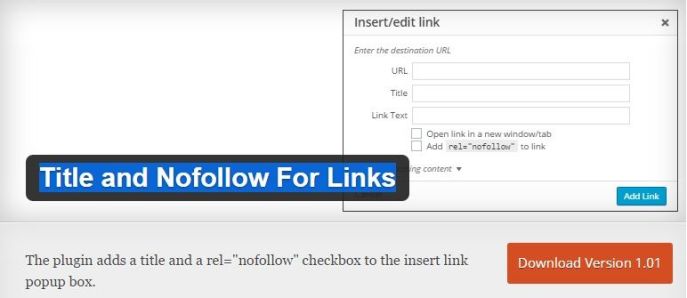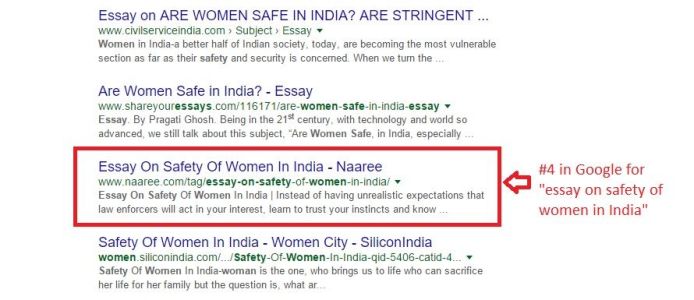How to avoid pagerank leak and 6 best practices to improve it

Do you have lots of outbound links leading to other websites on your WordPress blog?
Would you like to know how to set up these links to avoid PageRank leak on your blog? In this post, that’s exactly what I’m going to show you and you will also learn 6 best practices big bloggers follow to improve pagerank.
You see, when I first started blogging, I was enthusiastic about writing great content, referring to experts and linking to their content in my blog.
However, I was not careful about the kind of links I had setup, and I let my blog leak a lot of PageRank over the years.
What Is PageRank and Why Does It Matter?
According to SEO expert, Bruce Clay, “PageRank is a link analysis algorithm used by Google to help determine the relative importance of a website. Every website is given a Google PageRank score between 0 and 10 on an exponential scale.”
Matt Cutts of Google explains it very well in his post here. He says, “Probably the most popular way to envision PageRank is as a flow that happens between documents across outlinks.”
Although PageRank is not spoken of much nowadays, with TrustRank being the more important factor, it is still an important ranking factor.
Now, if you’re like me, and you’re merrily linking to other sites from your WordPress blog, you could be leaking link juice like the Titanic.
So, how can you avoid pagerank leak? There are a few simple fixes you can implement to conserve PageRank on your WordPress blog.
Avoiding PageRank Leak
1. Implement Nofollow
As Matt Cutts notes, “Nofollow is a method (introduced in 2005 and supported by multiple search engines) to annotate a link to tell search engines ‘I can’t or don’t want to vouch for this link.’ In Google, nofollow links don’t pass PageRank and don’t pass anchortext.” Check out this post to understand more about the rel=”nofollow”tag.
According to Stone Temple Consulting, “One commonly misunderstood aspect of a NoFollow attribute is what happens to the PageRank that would have flowed through that link. In reality, the PageRank is not redistributed through other links on the page; it is simply lost.”
However, there are times you might still want to implement the Nofollow tag to your outbound links, such as when linking to ads or affiliate links. So how do you add the Nofollow description to your outbound links? As WordPress fans know, there’s a plugin for that.
The Title and Nofollow For Links plugin adds a title and a rel=”nofollow” checkbox to the insert link popup box. It’s a simple and easy fix, but it does involve going through all your previous blog posts and changing all outbound links to “nofollow”.
Just make sure you use the nofollow tag only for outbound links, and not for internal links to your own posts and pages, even if there are some who claim that this is a good idea.
There are some bloggers who recommend using nofollow tags for your tag and category pages because “it’s too difficult to rank a tag page than a normal page”.
Actually, I have found that the opposite is true and that it is not difficult to get tags ranked for long tail keywords. I use a lot of descriptive tags with long-tail keywords in my blog posts and get regular traffic from them, thanks to the fact that some of these tags rank very well in search engines.
Even though it’s not a high-traffic or competitive keyphrase, it gets my blog traffic that I would not have got had I not allowed PageRank to flow to that tag.
Kissmetrics has some of the best advice I’ve seen on internal linking best practices.
2. Implement Redirects
If your blog has a bunch of 404 errors, you could be losing link juice too. To fix this, you need to implement redirects to pages that you want to get found in search engines.
You could also implement redirects to pass link juice from low-quality pages on your site to more important pages that you want Google to find.
Again, WordPress users have a number of plugins they can use for this. To create redirects on your WordPress blog, you can use a plugin like the Quick Page/Post Redirect Plugin or the Redirection plugin.
These plugins will help you create redirects for 404 errors or any other links on your site so you can stem the pagerank leak and pass link juice to where it matters.
6 Best Practices to Improve PageRank
Although PageRank has given way to the less well-defined TrustRank, building quality backlinks to your blog is still as important as ever.
So what options does a blogger on a budget have to improve PageRank with quality backlinks? Here are some options you can try.
1. Create Epic Content
If you want to get links, you need to create content that is worthy of being linked to. As Neil Patel says in his Advanced Guide to Link Building, “To earn links in today’s crowded content world, you need to take your stuff to the next level.”
A new study from Moz and BuzzSumo, found that content that garnered both links and shares was deep research or opinion-forming content, such as that published by renowned publications like The Guardian and The New York Times.
Bloggers can take a cue from journalists to publish well-researched content, such as whitepapers, case studies or long list posts to attract links to their content. Check out the Quicksprout blog for examples of truly epic content.
2. Cultivate a Large and Loyal Social Media Following
Although social media shares do not directly influence your search rankings, they can certainly help you get found and noticed by other bloggers who will happily link to you if your content is link-worthy.
That is why cultivating a large and loyal social media following, that shares and links to your content, is an important step towards increasing your PageRank.
3. Reach Out to Influencers
Influencer marketing is not just a buzzword, but a very important tactic used by some of the best bloggers to get links to their site and improve PageRank and traffic.
Brian Dean managed to get a number of influential bloggers to link to his posts because he not only created epic content, but also reached out to them to let them know about it.
Quicksprout has get some clever ideas for how to get influencer’s to link to you. But before you start building that relationship with an influencer who is likely to promote your content, read my influencer marketing best practices to create a relationship that works for both parties.
4. Join Blogging Communities
Joining a blog community is a good way to start a blogger outreach program. You get to promote and upvote each other’s content on these community sites, which increases your visibility, and the chance that other bloggers will share your posts with their networks. Go here to find a list of blog communities you can join.
5. Get Interviewed
Getting interviewed by other bloggers is an excellent way of building links to your blog. To get on the radar of other bloggers and get alerts of interview opportunities, join a community such as MyBlogU.
6. Guest Blogging
Even today, guest blogging on authoritative blogs is a very effective way to build links to your blog. For best results, include links to your blog in the body of your guest posts, and not just in the author bio at the end.
I hope you’ve enjoyed these tips on how to avoid PageRank leak and improve PageRank of your blog. If you have any tips of your own to share, do post them in the comments below.



Leave a Reply